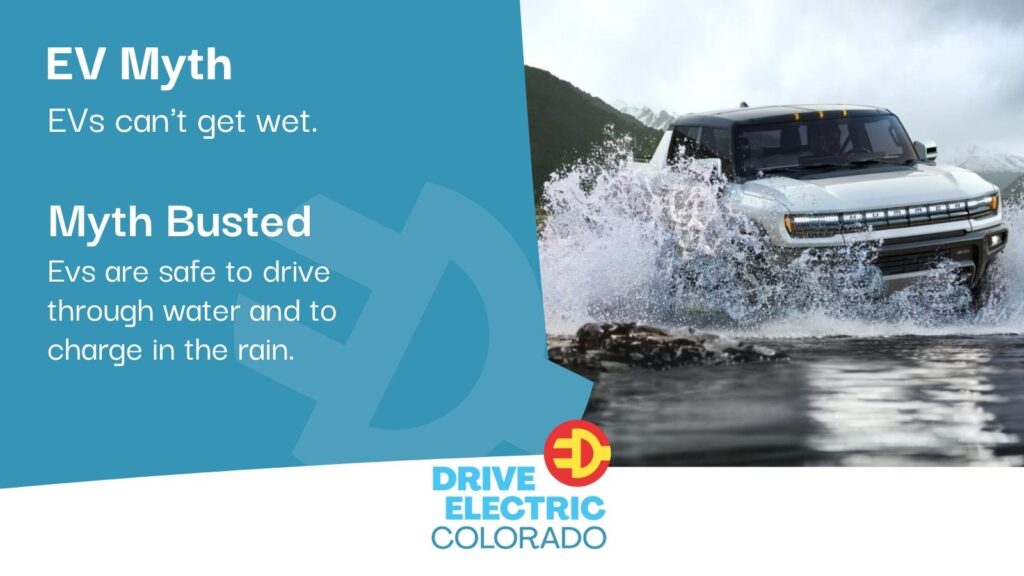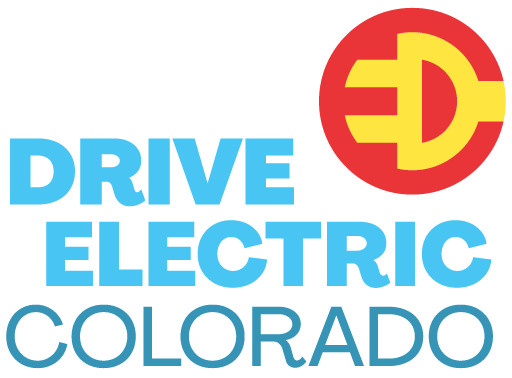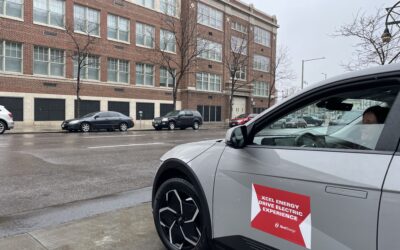
Myth 1: You can’t drive an EV in the rain / You can’t get your EV wet
Myth 2: You can’t drive an EV through a puddle
Myth 3: You can’t charge your EV in the rain
Myth BUSTED: EVs are safe to drive through water and hold no threat of electric shock when wet due to battery insulation. Charging in the rain is safe and holds no threat of short-circuiting, sparks, or other dangers.
Even if you don’t know much about electric vehicles (EVs), the most important characteristic of this type of vehicle is immediately apparent: electric cars are, well, electric. EVs are charged off an outlet through an electric current. The energy is then stored in a battery somewhere in the frame of the car (typically on the bottom, front, or back of the vehicle, depending on the model).
One question that EV experts are commonly asked is a variation of “Is it safe to use/drive/charge my EV when it is raining or wet?” The short answer is “yes!”
In fact, electric cars pose no threat of electric shock and are not dangerous to drive in the rain. Likewise, EVs are safe to drive through water, including deep puddles (though, of course, we would not recommend trying to drive though floodwaters) (Perry, 2018.)
The batteries and accompanying electric systems in EVs are isolated and equipped with extensive safety systems that automatically shut off power and insulate the battery packs when a collision or short circuit is detected (Grabianowski, 2008). It is pretty much impossible, under normal working conditions, for water to come into direct contact with the batteries themselves (Grabianowski, 2008). Also, consider the fact that your current gas car has an electrical system! Your internal combustion engine (ICE) vehicle includes electrical sound systems, electric and digital screens, and electric systems to run the lights. These systems do not short out or shock anyone when you are driving in the rain or through a large puddle. The same is true for an electric vehicle—in fact, it can be argued that the battery systems in electric vehicles are far more insulated than the battery pack currently sitting under your hood.
Additionally, EVs have been tested in deep water and can safely drive through deeper waters than ICE vehicles can (Grabianowski, 2008; Perry 2018). A quick YouTube search will bring up a plethora of videos featuring EVs driving through deep waters, “Electric cars are generally better than conventional cars when it comes to dealing with excess surface water. EVs work in a less complex way than fossil fuel powered cars, meaning that some of the traditional risks with taking cars through deep water no longer apply," (Perry, 2018). One of the primary benefits of the EV design is a simpler, more efficient, less complex system with fewer moving parts. Fewer parts = less opportunity for malfunction.
Ok, so you can safely drive in the rain and through puddles. But what about charging your car in the rain?
Charging your car requires you to hook up the energy source (charger) with your car via an electric cord. Is it safe to charge in the middle of a rainstorm or snowstorm? Again, the short answer is, “yes!”
When you charge your EV, you are not exposed to the direct electrical current. Electricity will not flow through the charging station without being firmly locked into your car’s charge-port. Additionally, both residential and commercial charging stations are designed to protect you, your vehicle, and the charging equipment. Electric vehicle charging manufacturers want—and need—you to feel and be safe when charging your EV, “protective layers are incorporated into the design of charging station equipment, preventing any risk of short-circuiting, sparks, and other dangers," (Grabianowski, 2008).
In the end, the most shock you’ll get when driving an electric vehicle is the surprised look on your face when you first feel the acceleration of instant torque on the highway. So buckle up and go check out an EV near you!
Source 1: Ed Grabianowski "Will I get shocked if I drive an electric car through a big puddle?" 18 August 2008.
HowStuffWorks.com. <https://auto.howstuffworks.com/fuel-efficiency/vehicles/electric-car-shock.htm>
Source 2: Tristan Perry "Is Driving an Electric Car Through Flood Water Safe?" 29 December 2018. Green Car Future. <https://www.greencarfuture.com/electric/driving-through-flood-water>




